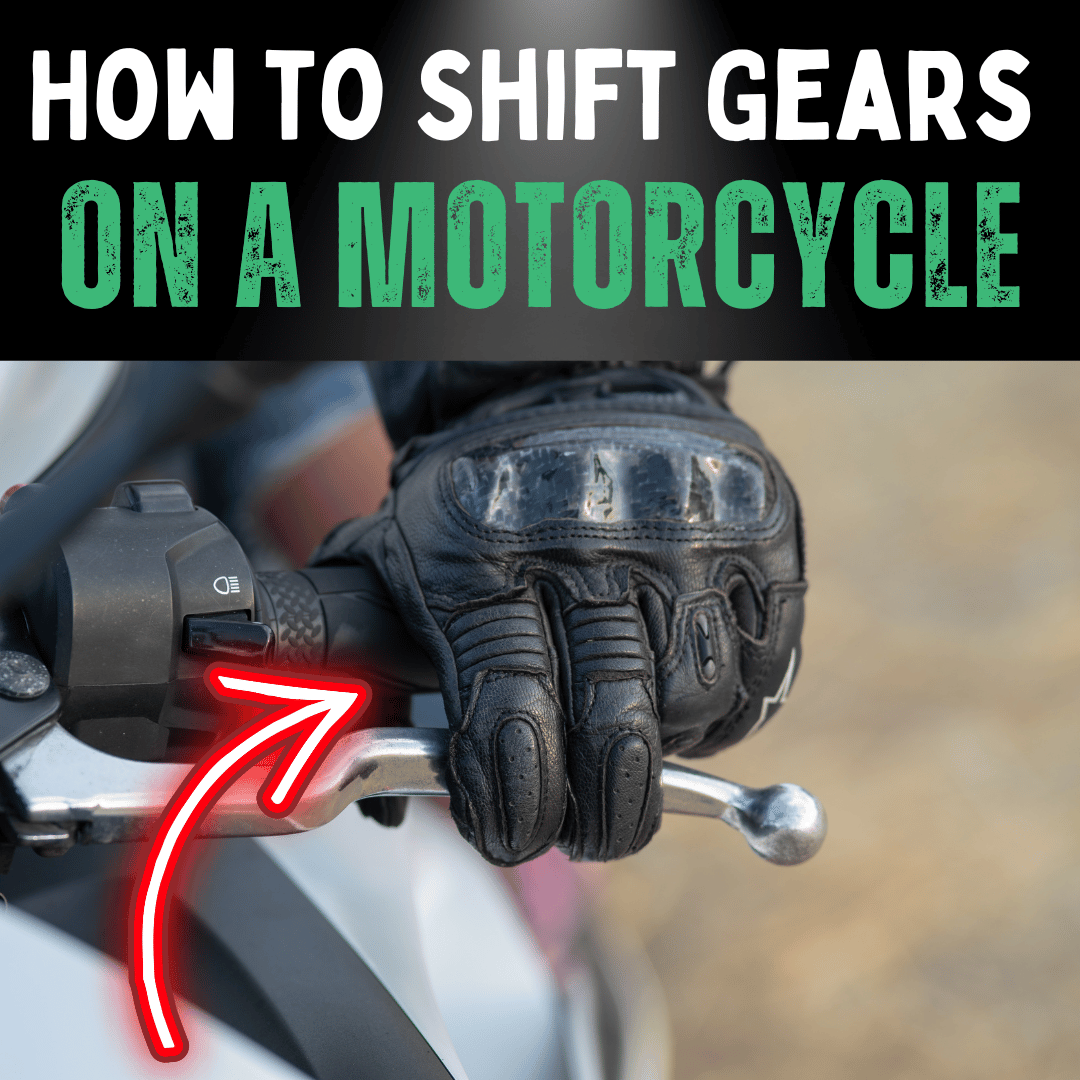
Published: 13.6.23
Updated: 13.3.25
In the thrilling world of motocross, every detail matters. From the agility of the riders to the mechanics of the bikes, every element plays a crucial role in achieving victory.
Among these, the use of the clutch is a topic that sparks widespread discussion and curiosity.
In this comprehensive guide, we delve deep into the intricacies of clutch use by pro motocross riders, offering you a front-seat view of the strategies and techniques that define the sport.
Let’s venture into the heart of motocross, uncovering the secrets that propel the pros to victory:
| Aspect | Details |
|---|---|
| Usage of Clutch | Maintaining optimal RPMs, takeoff, and mid-air adjustments. |
| Gear Shifting | Often done without the clutch but used in certain phases of the race. |
| Techniques | Varies among riders; more frequent in 2-stroke engines. |
| Impact | Dynamic and controlled race performance. |
Do Pro Motocross Riders Use The Clutch?
Science Behind Clutch Mechanics
Understanding the clutch technique is akin to mastering the heartbeat of a motocross bike, a pivotal insight for any enthusiast aiming to escalate their riding control.
Grasping the intricate dance between the gear transmission and the bike gearbox, riders learn to navigate varying track terrain, keeping a keen eye on the RPM range to stay within the optimal power range.
Related: How to Shift Gears on a Motorcycle (THE RIGHT WAY)
The Role of the Clutch in Motocross Bikes
In the world of motorcycles, the clutch holds a pivotal role, acting as a connector between the engine and the transmission.
It's that magical entity that allows riders to shift gears seamlessly, making the transition from a roaring start to a thunderous finish.
But how is it used differently in 2-stroke and 4-stroke engines, you ask?
In the 2-stroke engine, the clutch is used more frequently, giving the riders a chance to keep the engine running at peak power.
In contrast, the 4-stroke engine riders use the clutch a bit differently, utilising it to make smoother transitions between gears.
It's akin to the delicate art of balancing on a tightrope, where a slight misstep can cause a tumble.
Related: How To Ride A Dirt Bike With A Clutch (FOR BEGINNERS)
Techniques of Pro Motocross Racers
Seasoned pro motocross racers often find themselves leveraging their clutch use techniques to maintain a slight advantage.
Whether they are approaching deep parts of the racing track or negotiating specific track challenges, mastering the upshift and downshift technique becomes critical.
The art of shifting properly through the gear sequence, while maintaining throttle control, can spell the difference between victory and defeat.
Finessing the Gear Shift Lever
Seasoned racers have developed a deep understanding of their bike's mechanics, knowing precisely when to engage the shift lever to either upshift or shift gears without the clutch during a race.
These riders are adept at changing gears without losing momentum, a skill perfected over years of experience.
Related: What is a Dirt Bike? 10 Mind-Blowing Facts You Didn't Know
Latest Innovations in Clutch Technology
-
New Generation of Clutch Servos by Cojali Parts
- Cojali Parts has introduced a new generation of clutch servos designed for enhanced performance and reliability. These servos offer better control and efficiency, crucial for both commercial and passenger vehicles, benefiting motocross riders with smoother and more responsive clutch engagement.
-
Growth in Dual Clutch Transmission Market
- The global market for dual clutch transmissions (DCT) is expected to grow significantly from 2024 to 2032. DCT systems provide smoother and faster gear shifts, improving vehicle performance and fuel efficiency. This trend benefits motocross by offering seamless gear changes and reducing clutch wear during races.
-
Innovations by Valeo at CES 2024
- Valeo showcased cutting-edge clutch technology innovations at CES 2024, enhancing vehicle performance and sustainability. These advancements improve clutch durability and performance, allowing motocross riders to push their bikes harder with greater reliability on challenging tracks.
Recent Trends in Motocross
-
Electric Motocross Bikes
- Advancements in battery technology are driving the trend towards electric motocross bikes, offering quieter operation and lower emissions. Electric bikes provide instant torque, enhancing the riding experience and gaining acceptance in motocross competitions.
-
Enhanced Safety Gear
- Innovations in safety gear, such as advanced helmets with better impact protection and smart gear with integrated sensors, are becoming more common. These advancements reduce the risk of injuries and improve rider safety, making the sport more accessible.
-
Smart Technology Integration
- Smart technology, including GPS tracking and performance analytics, is increasingly integrated into motocross bikes. These features help riders monitor their performance and make data-driven decisions to improve their skills.
-
Sustainable Practices
- The motocross community is emphasising sustainability, with efforts to reduce the environmental impact of events and promote eco-friendly practices among riders. This includes using biodegradable materials and encouraging proper disposal of fluids.
These trends highlight the evolving nature of clutch technology and motocross, driven by technological advancements and changing consumer preferences.
The Art of Clutch-Shift and Accelerator Control
It's no secret that mastering the clutch-shift technique can significantly impact a racer's performance on the racing track.
Developing a keen sense of when to engage the accelerator or manipulate the gas pedal, is crucial in maintaining the perfect harmony between speed and control.
This section aims to delve deeper into the art of clutch-shift and how racers maintain optimal control over their bikes.
Related: 10 Ways To Avoid Your Motorcycle Clutch From Burning Out
The Intricacies of Clutch Use After Takeoff
When the race is on, every second counts. The real beauty lies in mastering the moments post-takeoff.
It’s where pro riders showcase their skill, manoeuvring their bikes with an agility that leaves spectators awe-struck.
Let's take a closer glimpse into how the clutch comes into play during these critical moments.
Related: How Does A Motorcycle Clutch Burn Out?
Upshifting and Downshifting
Have you ever noticed how effortlessly these riders shift gears, especially when upshifting?
It seems almost like a whisper, a secret communication between the rider and their machine.
That's because, contrary to popular belief, many riders prefer not to use the clutch when upshifting.
It's a finesse that comes with experience, a knack for understanding the perfect moment to shift gears to maintain that crucial momentum.
Downshifting, on the other hand, is a different beast altogether...
Here, the clutch is left alone, untouched unless the rider senses the impending doom of a stall.
It's like a dancer knowing when to take a step back, regroup, and then leap forward with renewed vigour.
Mid-Air Mastery
The Role of the Clutch in Mid-air Adjustments
You might have seen those breathtaking jumps, where riders seem to defy gravity, flying through the air with their bikes.
During these airborne moments, the clutch becomes their best friend, assisting them in making those critical mid-air adjustments.
It's a scene straight out of an action movie, isn't it?
Venturing into the dynamics of mid-air adjustments, we find that the clutch technique again comes into play, showcasing the skill and agility of supercross racers.
With a firm grip on the bike handlebars, riders manoeuvre their bikes with precision, ensuring their dirt cycles maintain the right angle and balance, ready to gear down smoothly upon landing.
Exploring Innovations in Clutch Technology
As we venture further, it’s exciting to note how technology has been a game-changer in the motocross world.
The introduction of innovations like anti-slip clutches has revolutionised the way riders approach this sport.
Anti-slip Clutches
Imagine having a tool that prevents your bike from stalling, a technology that facilitates smoother shifting, almost like having a guardian angel looking over the rider, ensuring a seamless ride.
This is what anti-slip clutches bring to the table.
These clutches have become an indispensable asset in the toolkit of a pro rider, helping to avoid those moments where a slight mistake could cost the race.
Comparative Analysis of 2-Stroke and 4-Stroke Engines
| Category | 2-Stroke Engines | 4-Stroke Engines |
|---|---|---|
| Clutch Usage |
|
|
| Power Characteristics |
|
|
| Engine Braking |
|
|
| Skill Level and Riding Technique |
|
|
| Maintenance Considerations |
|
|
Training Methods for Mastering Dirt Bike Clutch Control
| Method | Objective | Description |
|---|---|---|
| Finding the Friction Zone | Understand where the clutch starts to engage. |
|
| Low Power Control | Maintain control at low speeds using minimal throttle. |
|
| Uphill and Downhill Control | Control the bike on inclines using the clutch. |
|
| Cone Drills | Improve precision and control in tight spaces. |
|
| Front Tire Lift | Develop the ability to lift the front tire using clutch control. |
|
| Stationary Balance | Maintain balance without moving. |
|
| Advanced Enduro Techniques | Apply clutch control in challenging enduro scenarios. |
|
In Summary
So, here we are, nearing the finish line of our thrilling deep-dive into the electrifying world of motocross.
If there’s one thing we've learned today, it’s that the clutch isn't just a piece of machinery tucked away in the belly of a dirt bike.
Oh no, it’s the unsung hero, a subtle maestro orchestrating a racer's performance to keep them at their peak, especially when it comes to hitting those sweet, sweet RPM zones that racers love so much.
You see, even though most racers might give the clutch the cold shoulder when they're shifting gears, it doesn't just sit idle.
Far from it! It’s there, working tirelessly behind the scenes during the race, helping keep the RPMs in that golden zone where the bike just sings.
Imagine being in the rider's shoes. Whether you're embracing the raw power of a 2-stroke or cruising with the steady hum of a 4-stroke, it's that clutch that helps paint this vibrant, pulse-pounding picture of speed and agility, blending man and machine into a breathtaking performance on the racing track.
So, next time you find yourself engrossed in a motocross race, don't just watch the riders; feel the rhythm, the synergy, the beautiful dance unfolding right before your eyes, where the clutch takes centre stage as the star performer.
And hey, who knows, maybe one day it'll be you out there, ready to dance the motocross dance, guided by the subtle hand of the clutch, carving your own path in this thrilling world.
Now, wouldn't that be a wild, exhilarating ride to embark on?
FAQ's:
Why might some pro motocross racers opt to use clutchless shifting techniques?
While using the clutch ensures a smoother transition between gears, some pro racers prefer clutchless shifting for quicker gear changes and to maintain a consistent power curve. It allows them to save precious seconds, which can be crucial in a race setting.
Besides maintaining RPMs, are there other instances where clutches are prominently used in a motocross race?
Absolutely, the clutch plays a vital role in executing controlled and precise movements, especially during takeoffs and when tackling sharp corners. It helps in modulating the power delivery to the wheels, enabling riders to have better control and stability on varying track terrains.
What kind of training do racers undergo to master the art of clutch control in motocross?
Mastering the use of a clutch is often an integral part of a racer's training regimen. Racers undergo extensive training to develop a keen sense of when to engage and disengage the clutch for optimal performance. This might include practising different techniques like "fanning the clutch" to prevent stalling or maintaining RPMs in specific track sections.
Are there specific bike setups or modifications that facilitate better clutch control in motocross racing?
Indeed, racers often work closely with their teams to fine-tune their bike's setup for better clutch control. This can include adjustments to the clutch lever for a comfortable reach and grip, or installing aftermarket parts that offer a more predictable and linear clutch engagement, facilitating better control during races.
Get in Touch 🚀
Loved our article on “Do Pro Motocross Riders Use The Clutch?” - Got the itch to dive into more wheely-awesome info?
Whether you're a parent or a grandparent, we're here for all your kids ride-on toy questions! 🚗💨
Feeling click-happy?
Jump straight into our wonderland at RiiRoo.com.
Or, if you're more the chatty type, give our Live Chat a whirl and let's talk toys!










Share:
How To Use The Choke On Your New Bike (WITH STEPS)
The Definitive Guide to The Different Types of Motorbike Clutches